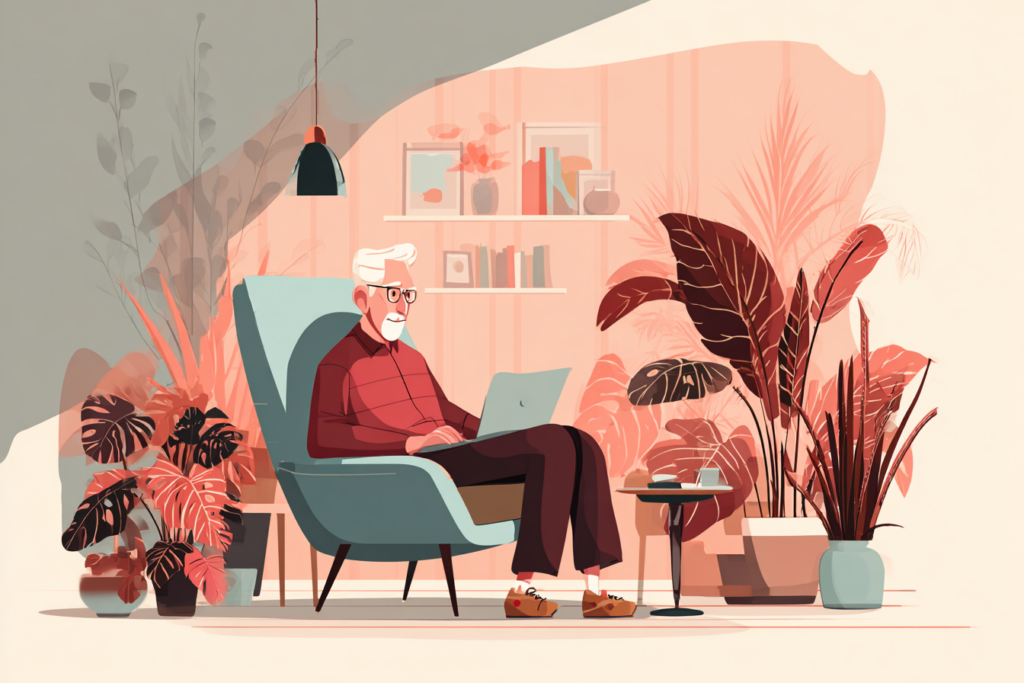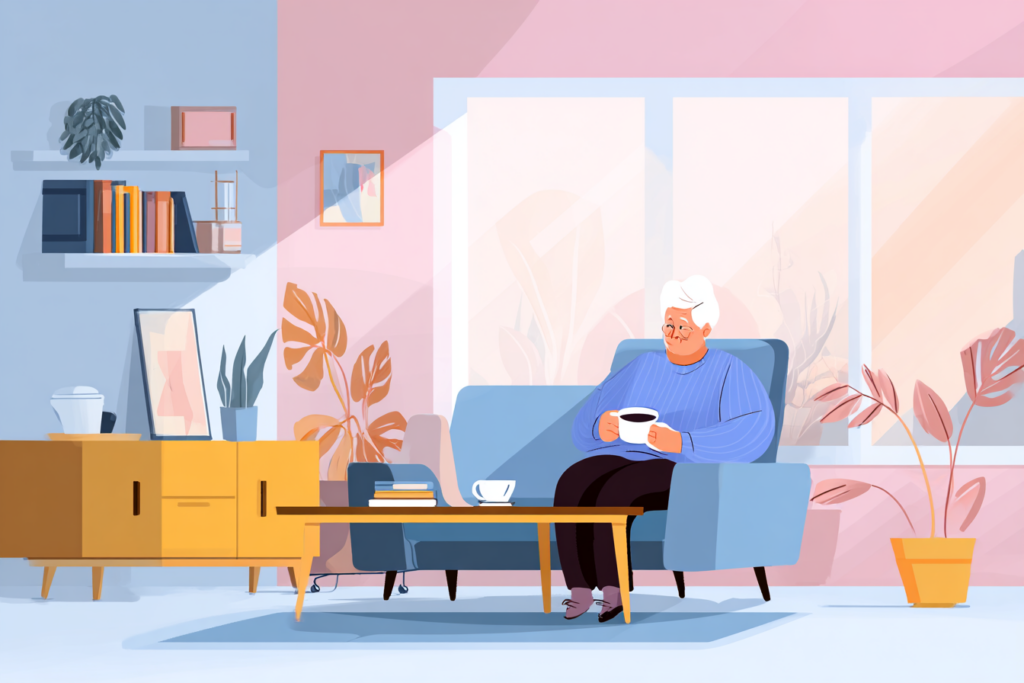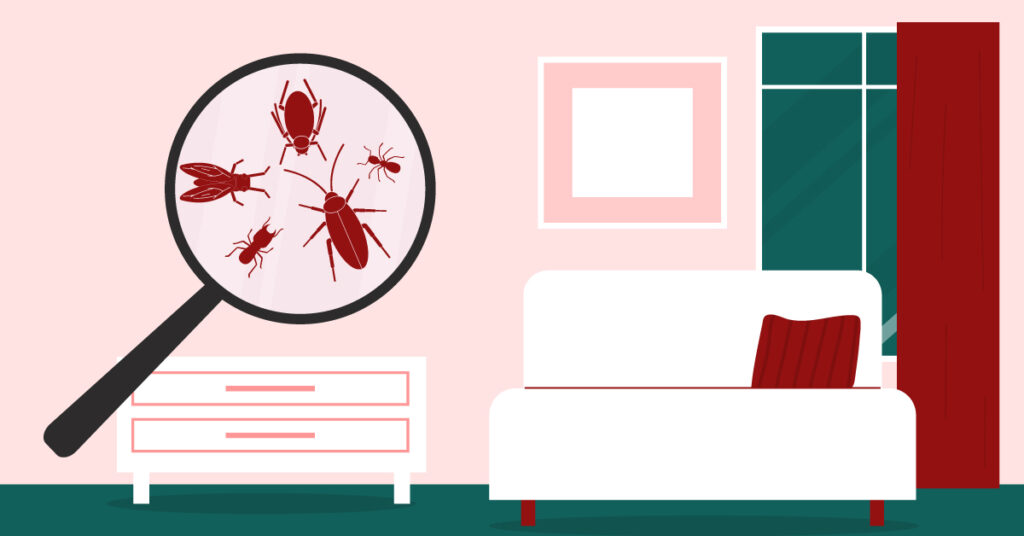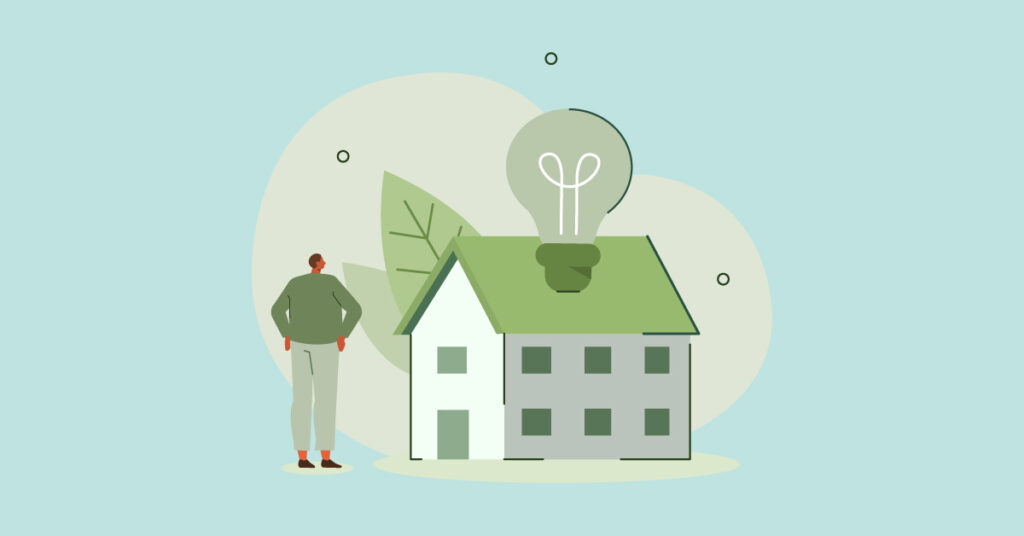As you approach retirement and plan to age in place in your beloved home, a little organization can go a long way toward making everyday life safer and easier. We’ll walk through practical tips – from decluttering to lighting to simple home updates – that help you simplify your living space for comfort and peace of mind. Let’s get started on creating a home that supports you in your golden years.
Embrace Decluttering for Safety and Peace of Mind
Over a lifetime, it’s easy to accumulate stuff. Organizing your belongings isn’t just about being tidy. It’s also about safety and making life easier. Clutter can create tripping hazards. This increases the risk of falls, which are a leading cause of injury for older adults.
Clear walkways and remove extra items. This helps you move around your home easily, even with a cane or walker. Plus, an uncluttered space tends to feel calmer and less stressful. Here are some decluttering tips to get you started:
- Make a Plan: Begin with a clear plan and set small, achievable goals. Focus on one room or one category of items at a time (for example, start with the hall closet or your book collection)
- Sort and Simplify: As you go through your things, sort items into three categories – keep, donate or gift, and discard. Be honest about what you truly use and need.
- Eliminate Duplicates: It’s common to find you own multiples of the same item (extra sets of dishes, tools, linens, etc.). Keep your favorite or most practical set and donate the rest.
- Organize What You Keep: For the belongings you decide to keep, create convenient “homes” for them. Invest in simple storage solutions, such as shelving units, labeled bins or baskets, and closet organizers. Store things you use often in easy-to-reach spots (waist to shoulder height) and stow infrequently used or seasonal items up high or down low..
- Ask for Help: Decluttering accumulated possessions can be a big job – you don’t have to do it alone. Invite family or friends to help, or even consider a professional organizer or senior move manager for guidance.
Smart Furniture Arrangement for Easy Navigation
Once the clutter is thinned out, it’s time to look at how your furniture is arranged. The goal is to set up each room so that it’s easy to navigate and comfortable to use. You shouldn’t have to dodge around coffee tables or worry about tripping over an ottoman on your way to the kitchen. A few minor layout tweaks can make a big difference in safety and convenience:
- Clear the Pathways: Arrange furniture to create wide, clear walking paths through each room. Ideally, aim for a clear space of at least 5 feet by 5 feet in main living areas, allowing for easy turning and maneuvering (this is actually an ADA guideline for accessibility). Remove or relocate any furniture that juts into walkways.
- Remove Trip Hazards: Identify common tripping culprits and address them. Secure or tuck away electrical cords so they aren’t snaking across the floor. If you have area rugs, ensure they lie flat and have non-slip backing; otherwise, consider removing them entirely if they tend to bunch up. Remember, no piece of furniture is worth a fall – safety comes first.
- Downsize Excess Furniture: Less is more when it comes to furniture in rooms you use every day. A house filled with a lifetime of furniture and decor can become hazardous if mobility changes. You might consider paring down to just the essential pieces you use regularly.
- Put Treasures on Display (Safely): Many of us have cherished knick-knacks or collectibles that bring us joy. Rather than placing them on low coffee tables or keeping them in precarious spots, move those items to secure shelves or display cabinets.
- Keep Everyday Items Within Reach: Consider the areas where you tend to relax – your favorite armchair, the kitchen table, or your bedside. Ensure these areas have what you need within easy reach. For example, in the living room, consider placing a small caddy or side table with your glasses, remote, phone, and reading material, so you don’t have to constantly get up or stretch to reach them.
Let There Be Light: Improving Lighting and Visibility

A well-lit home is a safer home. As we age, our eyes need more light to see clearly, and glare or shadows can become more troublesome. The great news is that you can often improve your home’s lighting easily. This change can greatly enhance safety and comfort. You don’t have to live with dim corners or dark hallways! Here are some lighting tips to brighten your space:
- Boost Overall Brightness: Evaluate the general lighting in each room. If any area is dim, consider using brighter bulbs or adding an extra lamp or fixture to improve the lighting. Use even lighting to prevent harsh bright spots and dark shadows. This can help reduce eye strain. For instance, if you only have one ceiling light in your living room, adding a floor lamp in a corner can spread the light better.
- Use Task Lighting: For activities such as reading, cooking, or hobby work, task lighting is your best friend. Place adjustable lamps or under-cabinet lights to directly illuminate work areas. In the kitchen, under-cabinet lighting shines on countertops for safer chopping and cooking. By your favorite reading chair, a gooseneck floor lamp can put light right where you need it.
- Add Night Lights: Navigating in the dark for that midnight bathroom trip can be risky. Plug-in night lights, placed along hallways, in bathrooms, and near stairs, provide gentle, automatic illumination at night. You can also find motion-activated night lights that only turn on when you approach. These little guides prevent fumbling in the dark and help you stay steady on your feet during nighttime hours.
- Make Switches Accessible: Struggling to find a light switch in the dark is no fun. Make sure light switches are easy to reach and ideally at an accessible height (around 48 inches from the floor is recommended). If your switches are the old-fashioned small toggles, consider replacing them with rocker-style or illuminated switches that are easier to see and flip.
- Don’t Forget Outdoor Lighting: The outside of your home needs love, too. Good lighting at entryways, porches, and along walkways is essential for those early morning newspaper fetches or welcoming visitors in the evening. Motion-sensor lights are a great option – they’ll turn on when you approach the door (or if anyone else does, which adds an extra layer of security). A well-lit path to your front door not only prevents trips on steps or uneven paths, but it also gives you and your guests a warm sense of safety as you come and go.
Bathroom Safety and Comfort Updates
Grab bars in the bathroom give solid support. They also lower the chances of slips and falls. The bathroom is a place where simple changes can greatly improve safety and convenience. Consider these practical bathroom updates to make your daily routine easier and safer:
- Install Grab Bars: If you make only one change, consider adding grab bars in the bathroom. Sturdy, well-anchored grab bars by the bathtub/shower and near the toilet provide a solid surface to hold onto as you move around. One study found that installing grab bars can cut the risk of falls in the bathroom by up to 50%.
- Prevent Slips: Place non-slip mats or adhesive grip strips on the bottom of your tub or shower, as well as on the bathroom floor wherever it tends to get wet (for example, just outside the shower).
- Seating Makes Showering Safer: If balance or standing endurance is a concern, think about using a shower chair or a transfer bench. A shower chair is a waterproof seat that you can place in the shower, allowing you to sit while bathing – no more standing on one foot trying to wash the other! Pair a shower chair with a hand-held shower nozzle for complete control while seated.
- Raise the Seat (Toilet and Otherwise): Installing a raised toilet seat attachment or replacing the toilet with a comfort-height model (a few inches taller) can make a world of difference.
- Better Bathroom Lighting: We mentioned lighting already, but it’s worth repeating here: make sure the bathroom has bright, even lighting (including a night light for those nighttime trips). A brightly lit bathroom helps you clearly see puddles of water, the edges of the bathtub, and the labels on medication bottles.
Kitchen Updates for Safe and Easy Cooking
The kitchen is the heart of many homes – a place where cooking, baking, and gathering take place. It’s also a room where a few thoughtful tweaks can keep you cooking safely for years to come. As we age, simple tasks like reaching high shelves or lifting heavy pots can become more challenging. Here are some kitchen update tips to simplify meal prep and dining in your home:
- Reorganize for Reachability: Take a look at how your kitchen is organized, and rearrange items to minimize the need for bending or climbing. Frequently used pots, pans, and dishes should live in lower cabinets or on the countertop within easy arm’s reach. Consider pull-out shelves or lazy susans for base cabinets so you’re not on your hands and knees digging in the back.
- Improve Kitchen Lighting: Make sure all your countertops and the stove area are well-lit. Installing inexpensive under-cabinet LED lights can brilliantly illuminate your cooking surfaces and eliminate shadows where you chop and read recipes. A bright task light over the sink can help with doing dishes or seeing that slippery soap.
- Slip-Proof the Floor: Use a washable anti-fatigue mat or non-slip rug in front of the sink (and stove if you tend to stand there for a while). If your kitchen floor tends to be slick, consider adding non-slip strips or a specialty treatment to increase traction.
- Simplify Appliances and Tools: If twisting knobs on the stove is difficult, there may be adaptive knob turners or you could consider using countertop appliances (like an electric kettle instead of boiling water on the stove) for convenience. Make sure appliance controls are easy to read and reach – if not, there might be simple modifications or products to help.
- Fire Safety in the Kitchen: Safety includes planning for the “what-ifs.” Cooking is actually the number one cause of home fires, and adults over 65 are at higher risk of kitchen fire accidents. Always have a properly functioning smoke detector in or near the kitchen (test it monthly). Keep a small fire extinguisher in a readily accessible location, and ensure you know how to use it effectively.
Clever Storage Solutions to Stay Organized
A place for everything and everything in its place – that’s the mantra of an organized home. Good storage solutions make daily life simpler by ensuring you can easily find what you need, when you need it, without excessive bending, reaching, or searching. As you declutter and re-arrange your home, consider a few senior-friendly storage strategies:
- Optimize Closet Space: Add extra shelves or a second clothes rod lower down so that more items are in easy reach. Use closet organizer systems or DIY solutions, such as plastic drawers or hanging shoe racks, to give every item a designated spot. Label bins or shelves so you can identify their contents at a glance.
- Use the “Goldilocks Zone” for Storage: The goldilocks zone (not too high, not too low) for storing frequently used items is roughly between your shoulders and knees. Try to keep everyday essentials in this zone throughout the house. Cumbersome items should ideally be stored at knee-height or lower (so you don’t risk dropping them from a height). Lighter items or seasonal items can be stored on higher shelves or in attics or basements if you don’t need to access them often.
- Furniture as Storage: Consider furniture pieces that double as storage to cut clutter. A storage ottoman in the living room can hold blankets or magazines out of sight. A bench by the entryway could have cubbies or drawers for shoes and dog leashes. In the bedroom, a bed frame with built-in drawers or simply some shallow bins under the bed can store offseason clothing or extra bedding neatly.
- Keep it Visible and Accessible: One principle of organizing for convenience is visibility. If you can see an item, you’re less likely to forget where it is or buy duplicates. In the pantry or cabinets, use risers or lazy Susan turntables to make items visible rather than hidden at the back.
- Don’t Overstuff – Circulate Items: Finally, remember that organization is an ongoing process, not a one-time event. As you bring new items into the home (or accumulate things like newspapers and mail), try to maintain a one-in, one-out rule: if you buy a new pair of shoes, consider donating an older, worn pair.
Simple Home Maintenance Strategies
Keeping a home safe and comfy isn’t only about big changes. It’s also about regular upkeep. As we age, tasks such as changing light bulbs and checking smoke detectors become increasingly important.
It’s about setting up your environment to support you in doing the things you enjoy, safely and with ease. By decluttering, you reduce hazards and make room for what truly matters.
Remember, aging in place doesn’t mean doing it all alone. Use the support you have. A grab bar or a family member’s help can make your home safe for this next chapter of life. A safer, simpler home lets you enjoy your daily activities. Whether you’re brewing coffee or curling up with a good book, you can relax with peace of mind. Here’s to many happy years ahead in your safe and comfortable haven!
You might also be interested in: 9 Tips to Increase Home Square Footage (Without Major Renovations)




